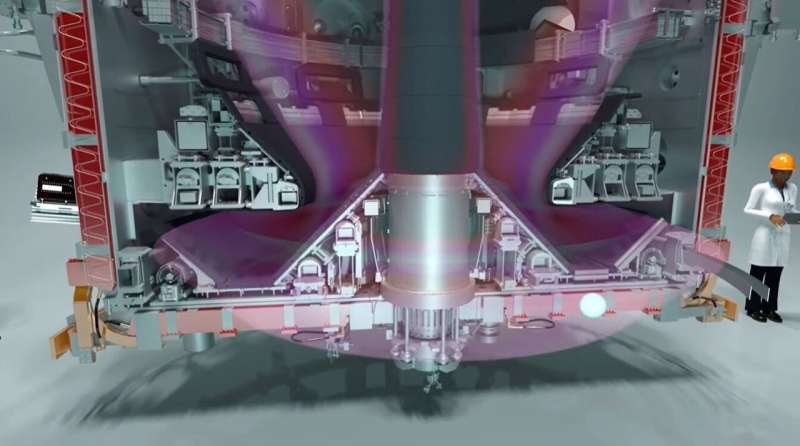The team at Culham Centre for Fusion Energy (CCFE) in South East England has notified the press that testing of plasma has begun on an upgrade to the Mega AMP Spherical Tokamak (MAST)—a new approach to creating a working fusion reactor. In their announcement, the team at CCFE noted that the plasma test has come after seven years of work upgrading the original MAST which has cost approximately £55m.
Producing electricity by means of a fusion reactor is still very much in the experimental stage. Scientists have dreamed for years of switching from the fission reactors now in use around the world, to much cleaner fusion reactors—if successful they would produce electricity by harnessing the energy released when light atomic nuclei are combined to form a heavier nucleus—all without producing radioactive waste. Prior work has shown that it can be done but the challenge has always been to be able to output more power using such a reactor than is used to produce it. Another challenge with such reactors is the exhaust system—the part that processes spent fuel and the heat that is ejected from the plasma. Current designs are not sufficient to handle such materials for very long periods of time, which means they have to be replaced periodically making the electricity produced cost more.
As part of the upgrade to the MAST, the team has also upgraded the exhaust system, which they believe will handle the enormous stresses without the need for constant replacements. They have named it the Super-X divertor. Testing of the upgraded MAST in the near term will be focused very heavily on testing the new divertor design.
The upgraded MAST is based on a new nearly spherical design (as opposed to the older doughnut shape), and like its predecessors, is controlled using magnetic fields. The team at CCFE notes that such a design could also work for much smaller fusion plants, making their construction much less expensive. The British government is optimistic about fusion plants, and because of that has been providing the funding for the CCFE project. They expect one day to have such plants producing the power that the U.K. will need in the future, without the need to handle its waste. The current goal date for such a working plant is 2040.
More information: ccfe.ukaea.uk/research/mast-upgrade/
© 2020 Science X Network























